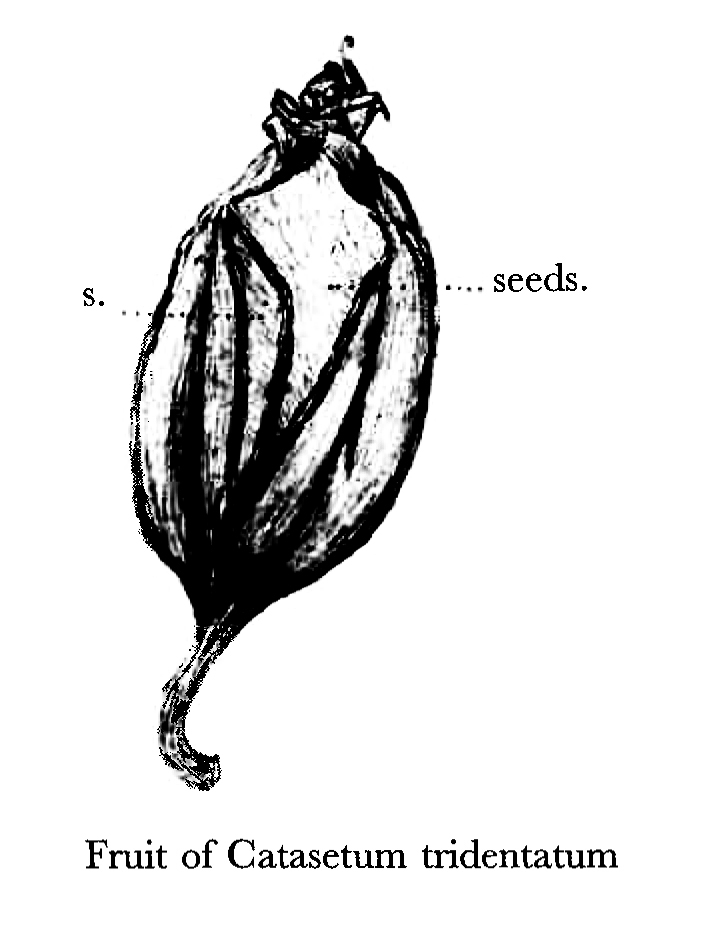From Edward Bradford 31 July 1863
Roy⟨al Military College | Sandhurst⟩
Dear Sir.
The interest which I had ⟨derived⟩ from your recent work on the ferti⟨l⟩isation of Orchids1 will I hope excuse my intrusion on your notice.
Some years since while stationed in Trinidad I gave much attention to plants of this family of which I collected and I may say domesticated about 80 species—2
One of the most common of these is the plant which is called Catasetum tridentatum— This I learn from your work you have been led to conclude is a male plant only—3
Now I am very confident that I never met with any flower having the forms called Monachanthus or Myanthus in the island But recollecting that in my collection there was a dried specimen of what I considered a ripe fruit of Catasetum tridentatum I wrote to my friend Dr. Ha⟨n⟩ce of the British Consulate in China ⟨into⟩ whose ⟨hands they⟩ had passed, and he has ⟨sent the⟩ enclosed sketch of it. You may perhaps think it worth your notice—4
I must admit that I did not see the flower of this specimen but seen in its dried state it seems to me to shew enough of the withered antennæ to prove it to be a fertile Catasetum.
I submitted about 2 years since to the Linnean Socy. a paper descriptive of a large number of West Indian orchids I was unfortunately unable sufficiently to revise it to fit it for publication—5
Had I when collecting possessed the light which your researches have cast on the subject, it might have been otherwise—
I remain Dear Sir | Very faithfully Yours | Edward Bradford.
31 July 1863.
Charles Darwin Esqr. F.R.S | &c &c &c
[Enclosure]
Extract from Dr. Hance’s le⟨tter dated⟩ 2⟨ ⟩ Ap⟨ril⟩
“You are perfectly right about Catasetum tridentatum— The specimen in my herbarium labe⟨lled⟩ as gathered by you in Trinidad in August 1845 has a large ripe fruit on it quite full of sacciform seeds— The accompanying sketch is a faithful representation of the fruit in question”.

CD annotations
Please cite as “DCP-LETT-4259,” in Ɛpsilon: The Charles Darwin Collection accessed on